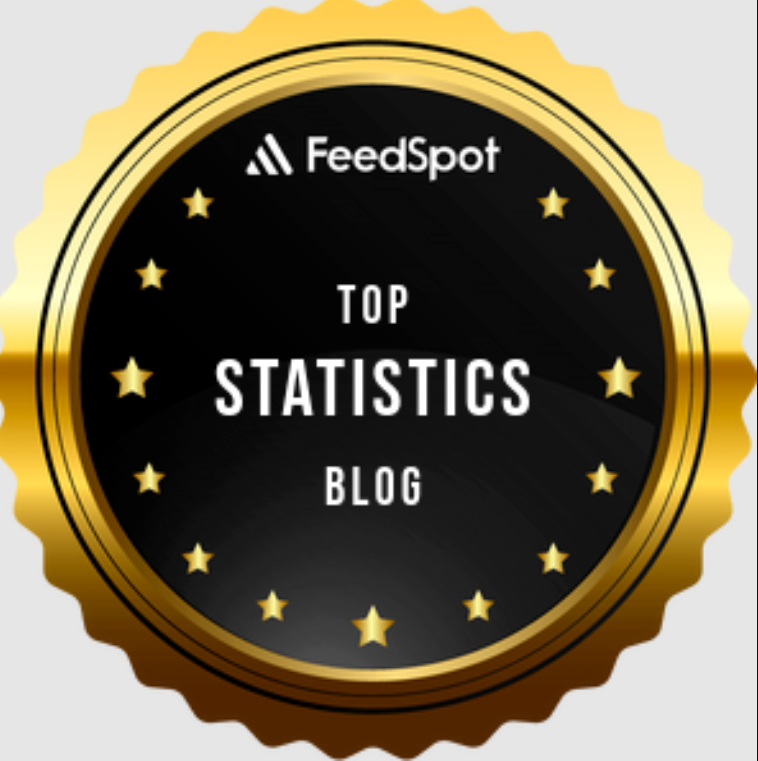I was recently notified that my blog features as one of the Best statistics websites for 2025, here. You know it’s serious when you get a badge: 
But more seriously, it’s quite something to be included among those other esteemed individuals, some of whom you may recognize as leading professors, accomplished scientists and practitioners in statistics, computer science, machine learning, and data science. It gives me the sense that at least some of my contributions turns out to be meaningful. I don’t write much (on average one post every 6 weeks or so). I don’t write to accumulate readership, no twitter\X or facebook presence for example. I don’t write about mainstream topics, nor do I write for a broad audience (though occasionally there are opinion pieces). It is therefore doubly nice to be recognized. Thank you.

 for many reasons. Two of those are (1) easy integration with almost whichever software you can think of, and (2) for its graphical powers. Color-wise, I dare to assume you probably plotted, re-specified your colors, plotted again, and iterated until you found what works for your specific chart. Here you can find modern visualization so you are able to quickly find the colors you look for, and to quickly see how it looks on screen. See below for quick demo.
for many reasons. Two of those are (1) easy integration with almost whichever software you can think of, and (2) for its graphical powers. Color-wise, I dare to assume you probably plotted, re-specified your colors, plotted again, and iterated until you found what works for your specific chart. Here you can find modern visualization so you are able to quickly find the colors you look for, and to quickly see how it looks on screen. See below for quick demo.